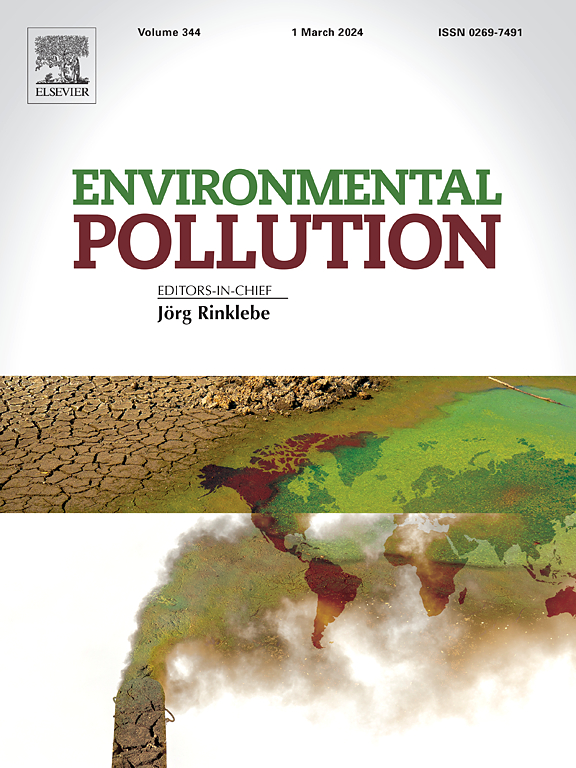Co-contaminant risks in water reuse and biosolids application for agriculture
IF 7.3
2区 环境科学与生态学
Q1 ENVIRONMENTAL SCIENCES
引用次数: 0
Abstract
Agriculture made the shift toward resource reuse years ago, incorporating materials such as treated wastewater and biosolids. Since then, research has documented the widespread presence of contaminants of emerging concern in agricultural systems. Chemicals such as pesticides, pharmaceuticals and poly- and -perfluoroalkyl substances (PFASs); particulate matter such as nanomaterials and microplastics; and biological agents such as antibiotic resistance genes (ARGs) and bacteria (ARB) are inadvertently introduced into arable soils where they can be taken up by crops and introduced to the food-web. Thus, concern about the presence of contaminants in agricultural environments has grown in recent years with evidence emerging linking agricultural exposure and accumulation in crops to ecosystem and human health effects. Our current assessment of risk is siloed by working within disciplines (i.e., chemistry and microbiology) and mostly focused on individual chemical classes. By not acknowledging the fact that contaminants are mostly introduced as a mixture, with the potential for interactions, with each other and with environmental factors, we are limiting our current approach to evaluate the real potential for ecosystem and human health effects. By uniting expertise across disciplines to integrate recent understanding regarding the risks posed by a range of chemically diverse contaminants in resources destined for reuse, this review provides a holistic perspective on the current regulatory challenges to ensure safe and sustainable reuse of wastewater and biosolids to support a sanitation-agriculture circular economy.


水回用和农业生物固体应用中的共污染物风险
多年前,农业开始转向资源再利用,将处理过的废水和生物固体等材料纳入其中。从那时起,研究记录了农业系统中出现的污染物的广泛存在。农药、药品和多氟烷基和全氟烷基物质等化学品;颗粒物质,如纳米材料和微塑料;抗生素抗性基因(ARGs)和细菌(ARB)等生物制剂无意中被引入耕地土壤,被作物吸收并引入食物网。因此,近年来人们越来越关注农业环境中存在的污染物,有证据表明,农业接触和作物积累与生态系统和人类健康影响有关。我们目前的风险评估是在学科范围内(例如,化学和微生物学)进行的,主要集中在单个化学类别上。由于不承认污染物主要是作为一种混合物引入的,它们之间可能相互作用,也可能与环境因素相互作用,我们正在限制我们目前评估生态系统和人类健康影响的真正潜力的方法。通过整合各学科的专业知识,整合对再利用资源中一系列化学多样性污染物所构成风险的最新理解,本综述为确保废水和生物固体的安全和可持续再利用以支持卫生-农业循环经济的当前监管挑战提供了一个全面的视角。
本文章由计算机程序翻译,如有差异,请以英文原文为准。
求助全文
约1分钟内获得全文
求助全文
来源期刊

Environmental Pollution
环境科学-环境科学
CiteScore
16.00
自引率
6.70%
发文量
2082
审稿时长
2.9 months
期刊介绍:
Environmental Pollution is an international peer-reviewed journal that publishes high-quality research papers and review articles covering all aspects of environmental pollution and its impacts on ecosystems and human health.
Subject areas include, but are not limited to:
• Sources and occurrences of pollutants that are clearly defined and measured in environmental compartments, food and food-related items, and human bodies;
• Interlinks between contaminant exposure and biological, ecological, and human health effects, including those of climate change;
• Contaminants of emerging concerns (including but not limited to antibiotic resistant microorganisms or genes, microplastics/nanoplastics, electronic wastes, light, and noise) and/or their biological, ecological, or human health effects;
• Laboratory and field studies on the remediation/mitigation of environmental pollution via new techniques and with clear links to biological, ecological, or human health effects;
• Modeling of pollution processes, patterns, or trends that is of clear environmental and/or human health interest;
• New techniques that measure and examine environmental occurrences, transport, behavior, and effects of pollutants within the environment or the laboratory, provided that they can be clearly used to address problems within regional or global environmental compartments.
 求助内容:
求助内容: 应助结果提醒方式:
应助结果提醒方式:


